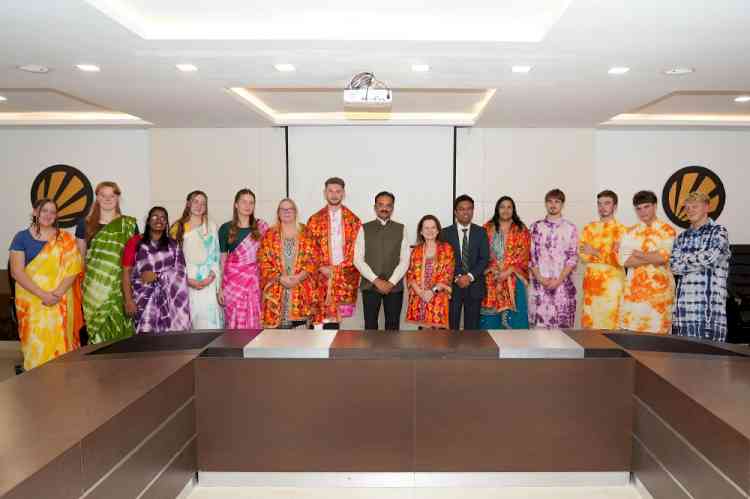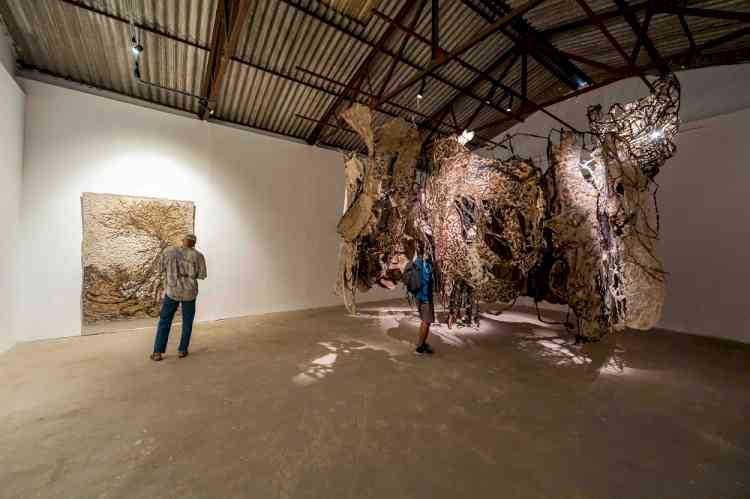Union Education Minister virtually Lays Foundation Stone of Infrastructure Projects Worth ₹201 Crore at Central University of Punjab
In a significant boost to higher education infrastructure, Union Minister of Education, Dharmendra Pradhan, virtually laid the foundation stone of infrastructure projects worth ₹200.99 crore at the Central University of Punjab (CU Punjab), Bathinda, on Tuesday. The ceremony was part of a nationwide initiative to launch infrastructure projects at centrally funded higher education institutions under the Ministry of Education, Government of India.

Delhi/Bathinda, July 29, 2025: In a significant boost to higher education infrastructure, Union Minister of Education, Dharmendra Pradhan, virtually laid the foundation stone of infrastructure projects worth ₹200.99 crore at the Central University of Punjab (CU Punjab), Bathinda, on Tuesday. The ceremony was part of a nationwide initiative to launch infrastructure projects at centrally funded higher education institutions under the Ministry of Education, Government of India.
The virtual foundation stone laying ceremony took place during the Akhil Bharatiya Shiksha Samagam 2025 (ABSS-2025) in New Delhi, commemorating the fifth anniversary of the National Education Policy (NEP) 2020. The event was graced by the presence of Jayant Chaudhary, MoS for Education & MoS (IC) for Skill Development & Entrepreneurship and Dr. Sukanta Majumdar, MoS for Education & Development of North Eastern Region. Punjab Education Minister Shri Harjot Singh Bains also graced the occasion. CU Punjab Vice-Chancellor Prof. Raghavendra P. Tiwari joined the dignitaries at the ABSS-2025 celebrations in Delhi.
Simultaneously, a formal ceremony was held at CU Punjab’s main campus in Village Ghudda, District Bathinda, where university officials, faculty, staff, and students—led by Pro Vice-Chancellor Prof. Kiran Hazarika—enthusiastically participated in the live telecast of the event.
During this event, the Union Education Minster virtually laid the foundation stone for the following infrastructure projects, funded through the Higher Education Financing Agency (HEFA):
· Academic Block – 20642 Sqm
· 600-Seater Boys’ Hostel – 9733 Sqm
· 400-Seater Girls’ Hostel – 7289 Sqm
· 100-Seater International Students’ Hostel – 2355 Sqm
· Vice-Chancellor’s Residence – 393 Sqm
Several of these buildings are designed in compliance with GRIHA-IV norms, incorporating green, energy-efficient, and sustainable features such as sensor-based lighting, solar energy systems, aseismic structures, zero-waste water systems, and full accessibility for differently abled persons.
Addressing the gathering virtually, Union Education Minister Dharmendra Pradhan congratulated the CU Punjab fraternity on the commencement of new infrastructure projects and extended warm wishes on the completion of five transformative years of NEP 2020. He stated, “Under the visionary leadership of Prime Minister Narendra Modi, education has become central to India’s growth story. NEP 2020 has reached classrooms, campuses, and communities, ushering reforms in early childhood care, foundational literacy, and holistic education.”
Pradhan lauded the proactive role of higher education institutions in implementing NEP 2020, particularly in advancing multidisciplinary education, digital inclusion, skill development, and inclusive learning. He highlighted the notable improvements in rural learning outcomes through initiatives like the NIPUN Bharat Mission and emphasized that this progress is the result of collective efforts by educators, students, institutions, and state governments.
Vice-Chancellor Prof. Raghavendra P. Tiwari expressed heartfelt gratitude to Prime Minister Narendra Modi and Education Minister Dharmendra Pradhan for their visionary support and the generous HEFA grant. He emphasized that these developments will propel CU Punjab towards becoming a world-class institution with state-of-the-art facilities for teaching, research, and student well-being.
These new projects will significantly augment CU Punjab’s capacity to deliver quality higher education to larger number of youngsters while fostering innovation, sustainability, and holistic development, further cementing its place among the top institutions in the country.


 City Air News
City Air News 











